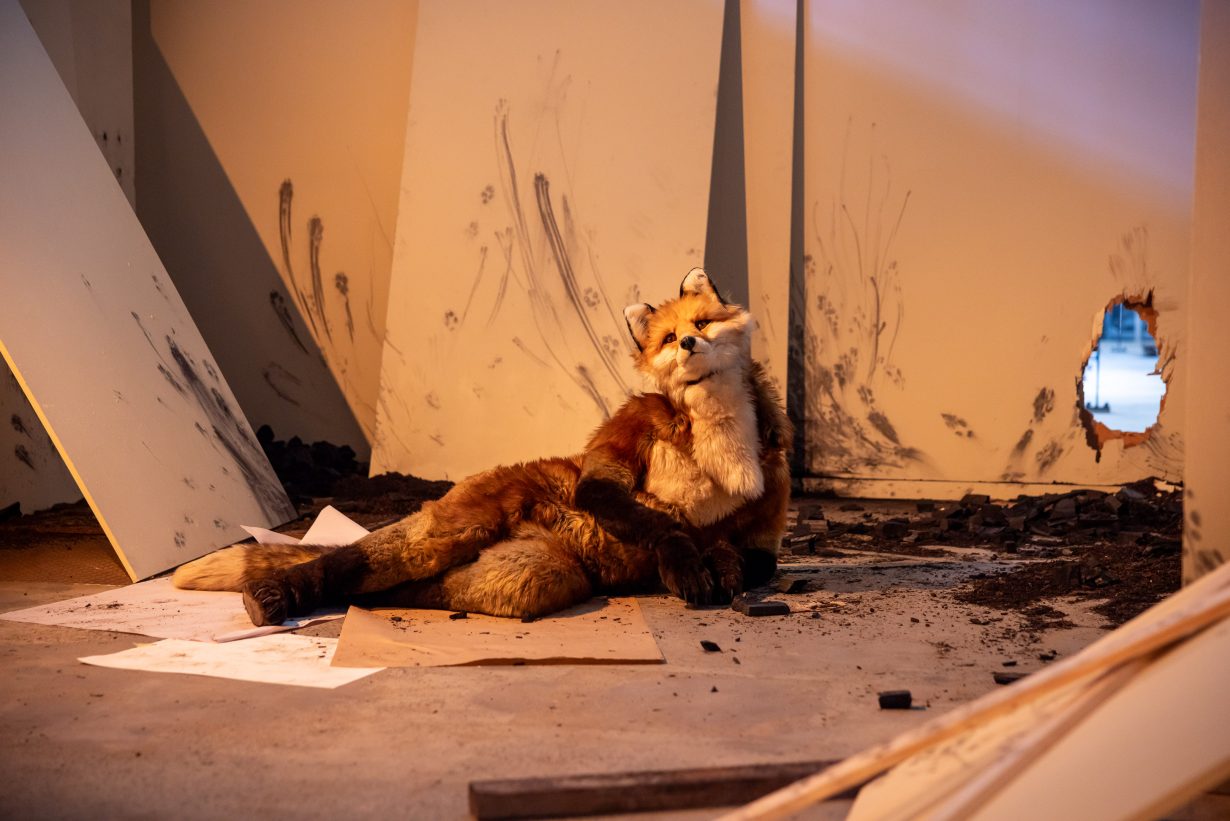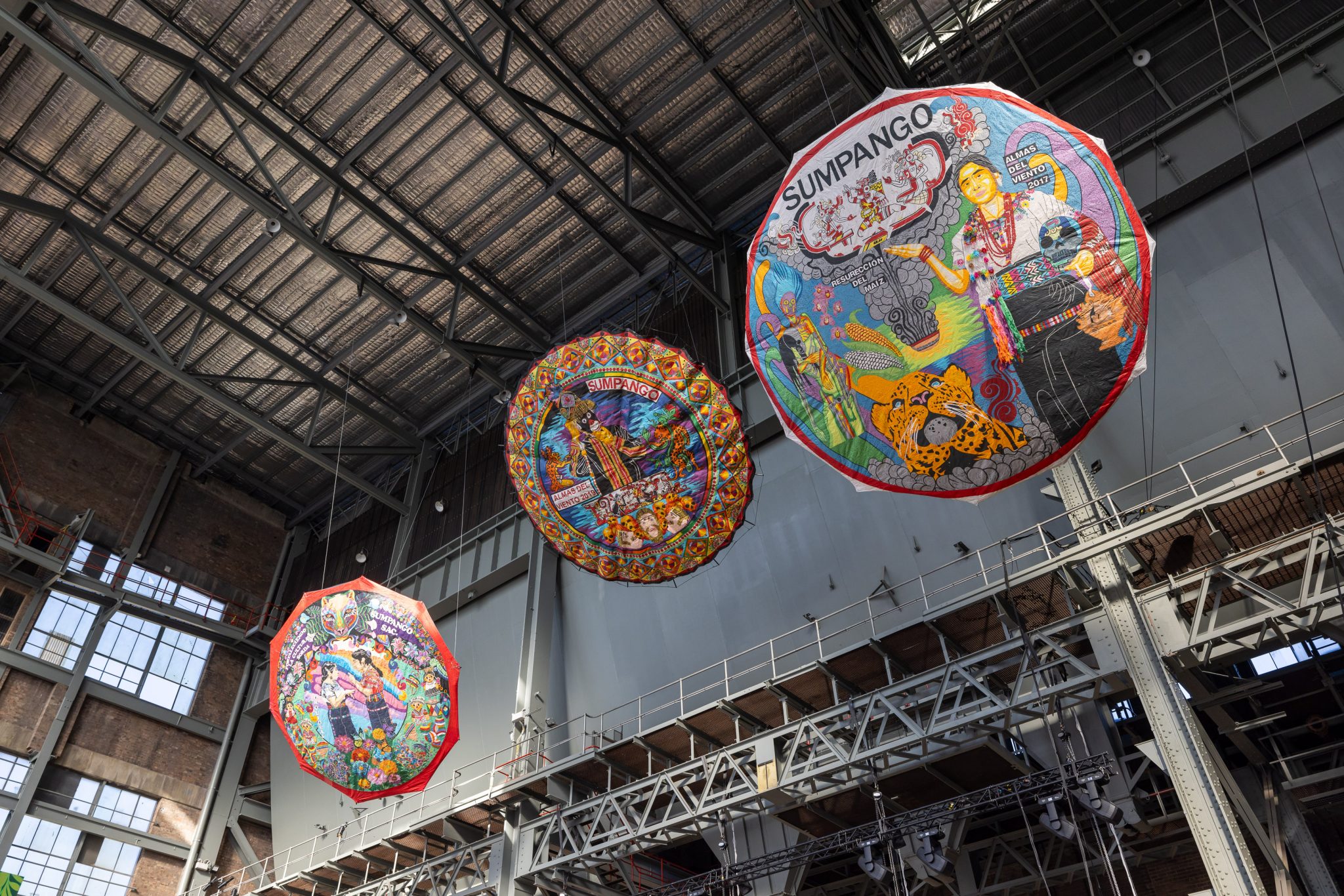The 2024 edition, Ten Thousand Suns, is a celebratory display that ‘refuses to concede to apocalyptic visions of the future’ – but is that possible right now?
Featuring over 400 works by 96 artists and collectives, Ten Thousand Suns is a kaleidoscopic, celebratory and vibrant display sprawling across six locations. Led by artistic directors Cosmin Costinas and Inti Guerrero, the exhibition ‘refuses to concede to apocalyptic visions of the future’. Instead, Ten Thousand Suns presents joy and celebration as crucial forms of resistance, whether they are aimed at settler colonialism, ecological destruction, gender-based violence or discrimination. As its title suggests, the biennale exalts in multiple interpretations of the sun, and the thousands of words used to describe it: here, it acts as a witness to the violence of Empire, a harbinger of unchecked global heating, a deity in many First Nation cosmologies, a figure of queer resilience and a symbol of a new dawn.
The biennale’s central venue is White Bay Power Station, a former coal-fuelled plant constructed between 1912 and 1917 and open to the public for the first time. Here works are interspersed among machinery, equipment, control rooms and wash basins. Dylan Mooney’s vivid mural honouring the life of queer Indigenous activist and dancer Malcolm Cole, who passed away with HIV/AIDS in 1995, scales multiple stories in the boiler house. Depicting Cole dressed in drag as a Black Captain Cook, Malcolm Cole – larger than life (2024) pays tribute to Cole’s performance atop the first Indigenous float at Sydney’s Gay and Lesbian Mardi Gras in 1988, 200 years after the arrival of the First Fleet. In the same space, a series of multicoloured barriletes – enormous circular tissue-paper kites made by the all-female collective Orquídeas Barrileteras, which was established in the wake of the Guatemalan Civil War and genocide of the Mayan people – hang suspended from the rafters. Flown in celebration of life and in honour of the dead, these barriletes are an homage to two deaf women in the community, their likenesses surrounded by radiant images of native flowers and animals. At the Art Gallery of New South Wales (AGNSW), The Pacific Sisters’s MuruMoa (2023) is a figurative sculpture of strength and empowerment, clothed in a dazzling robe and headpiece constructed out of volcanic rock, shells, silk, raffia, horse bone, wool and other materials. One of four aitu (avatars) on display, and made in response to French nuclear testing in the Mururoa atoll, MuruMoa keeps a protective eye on the lands, oceans and people of a postnuclear world.
Often a biennial’s overall concept can feel too broad or too narrow, flattening a massive number of artworks into a didactic message. In its unabashed willingness to embrace so many differing interpretations of its overarching theme, from Indigenous futurism to the history of Islam in Australia, Ten Thousand Suns manages to avoid this trap. Indeed, much of the biennale’s energy comes from the way it showcases the breadth and possibility of artistic practices grounded in multiple languages, cultures, rituals, cosmologies and histories.

On one wall of the Udeido Collective’s crimson room-size mural, a man breaks free from chains on a mound of flaming skulls. A part of The Koreri Transformation (2024), an installation on view at UNSW Galleries, the work memorialises Papuan spiritual and political ideals amidst the threat of neocolonial expansion. At AGNSW, Francisco Toledo’s mixed-media works on paper see people transforming into beasts drawn from Oaxacan fables; and at the Museum of Contemporary Art, Kirtika Kain’s glinting ten-metre canvas The illusion of your history (2023), which layers the sacred materials of cow dung, gold leaf and wax into a lush and tactile surface, reflects her experience as part of the Dalit diaspora. Among all these works, joy, alongside remembrance, grief or rage, is found in the materials themselves, in the process of resurfacing forgotten traditions and legends, or in the commemorating of acts of resistance.
But what if the apocalypse is already here? The exhibition text, somewhat cryptically, speaks of ‘a world ablaze’, and given its avowed concern with ‘colonial oppression and dehumanisation’, it’s impossible to disconnect Ten Thousand Suns from our current moment. Six months into Israel’s genocidal campaign in response to Hamas’s terror attacks on 7 October – its unrelenting bombardment of the Palestinian people and its flagrant, ongoing violations of human rights and international law – Sydney’s art institutions continue to remain publicly silent, despite numerous petitions to do otherwise. What does it mean for these institutions to distance themselves from the immediate pleas of artists and activists, even as they showcase biennale works that explicitly ‘rall[y] against oppression’? Such a question is not aimed at the works themselves but the institutional context in which they are viewed, and whether this context blunts their potency.
In part, it is because of this question that White Bay is the most successful biennale location: there is a more overt awareness of the relationship between the space’s context, the site’s extractive colonial history and the artworks housed within it. Monira Al Qadiri’s videowork Crude Eye (2022), for instance, which recreates the inside of a Kuwait oil refinery in miniature, is surrounded by machinery once used to power the settler colony. As the camera pans across the unsettlingly majestic chambers of the refinery, a narrator extols the divine properties of oil. With its warm seductive lighting and slow-motion glide, the work is a mystical and ironic response to the logic of extractive capitalism and our Faustian bargain with fossil fuels. But it is also a work that sits in direct conversation with the room in which it is housed – we are drawn to consider both the virtual equipment on the screen and the legacy of the relics beside it. By actively engaging with the site in this way, White Bay highlights the difference between a spatial intervention (where an artwork can disrupt, reconfigure or transgress a space) and a presentation. One of the most galvanising and celebratory aspects of Ten Thousand Suns is the way it showcases that, even in the face of the unspeakable violence of Empire, of the horror of the HIV/AIDS pandemic or of the environmental catastrophes wrought by nuclear testing, transformative acts of making and imagining have always continued. That the joy of making, and the refusal to give in to the apocalypse, will go on regardless, and often in spite of, not because of, a gallery wall.
24th Biennale of Sydney: Ten Thousand Suns, Various venues, through 10 June
